
The addition of basal insulin to current oral medication is the simplest way to initiate insulin therapy in patients with type 2 diabetes.

The addition of basal insulin to current oral medication is the simplest way to initiate insulin therapy in patients with type 2 diabetes.

Hypertension is very common in people with diabetes; in this patient’s case, it may have been present for 5 to 10 years before the hyperglycemia appeared.
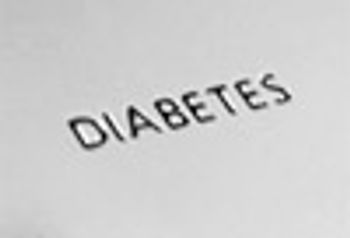
In addition to lifestyle changes, how would you treat this patient?

In patients deemed statin-intolerant, lifestyle changes and alternative classes of drugs should be pursued to lower LDL-C.

Up to 80% of those with necrobiosis lipoidica have diabetes mellitus; however, this disorder develops in fewer than 1% of people who have diabetes.

You might ask-as I did when I heard this story-“how can you feel better [after surgery] when you have no symptoms or exercise intolerance in the first place?”

Despite best efforts with lifestyle modification and adherence to metformin and glimepiride therapy, this man’s A1C continues to rise. What next?
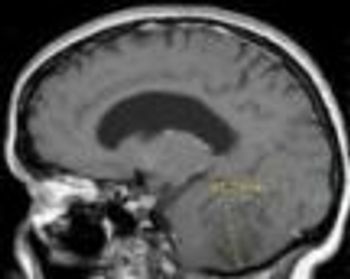
Lhermitte-Duclos disease is a rare, slow-growing, benign lesion of the cerebellum and is considered a hamartomatous tumor of the cerebellar cortex.

Blood sugar and HbA1C are very high; how would you treat this patient's hyperglycemia?

Type 2 diabetes mellitus is affecting teenagers at an alarming rate. Lifestyle changes are paramount in an environment of chronic caloric surplus.

Once-weekly exenatide, the recently approved GLP-1 receptor agonist, may help improve treatment adherence and outcomes in patients with type 2 diabetes.

For most patients who have had low back pain for less than 6 weeks, there is little need for imaging studies.
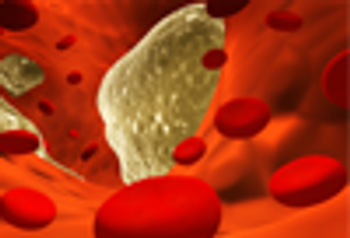
A genetic analysis questions the benefits of raising HDL-C levels to reduce the risk of MI and of the value of HDL-C as a surrogate marker of risk.

The 2012 ADA/EASD Position Statement prescribes patient-centered care for type 2 diabetes management using lifestyle change, metformin, DPP-4Is, GLP-1 RAs.

New research finds that type 2 diabetes mellitus, once considered a disease of “adult onset,” is highly resistant to treatment in overweight American youths-a group succumbing to the disorder at an alarming rate. Here, a comment on the cultural norms that make choosing health a daily battle.

Obesity hypoventilation syndrome (OHS) shares clinical symptoms with obstructive sleep apnea (OSA) such as daytime sleepiness, headaches, and memory problems. Both the symptoms and their sequelae, however, can be much more severe in OHS. Here, guidance on what to look for and how to manage OHS.

Would you treat the elevated A1C aggressively-and what would your target level be? Would you consider statins? Dr Shahady invites your insights.

Are these findings another green light for dark chocolate? Some experts say “yes” as they also point to a recommended upper daily “dose.” What does this new research add to the current data on the health benefits of the flavinoid-rich sweet? Drs Payal Kohli and Christopher Cannon discuss study results and what you should tell your patients.


Bariatric surgery nearly cures type 2 diabetes-at least that’s what results of a new study, presented at the recent ACC meeting, seem to imply.

It’s a known fact that regular consumption of red meat increases the risk of many chronic diseases-including diabetes, coronary heart disease, and cancer. Now, data from 2 large, long-term studies link daily consumption of red meat with death from cardiovascular disease and cancer. Drs Kohli and Cannon discuss what to tell your patients.
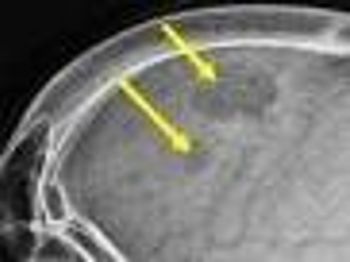
A 92-year-old woman presented with a 6-month history of progressively worsening fatigue, weight loss, generalized bone pain, and dyspnea on exertion. A skeletal survey found lytic lesions in the pelvis, sacrum, and calvarium (shown here).
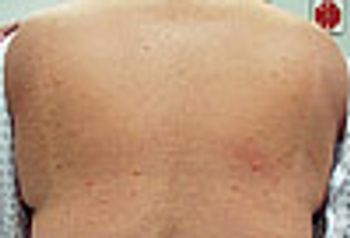
A 57-year-old obese woman with known and poorly controlled type 2 diabetes presented with the sudden onset of “yellow bumps all over.” Representative lesions on the back and elbows are shown.
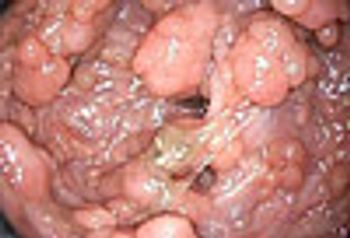
Diagnostic colonoscopy revealed innumerable polyps carpeting the mucosa from the rectum to the cecum. Endoscopic findings and family history were most consistent with familial adenomatous polyposis.
